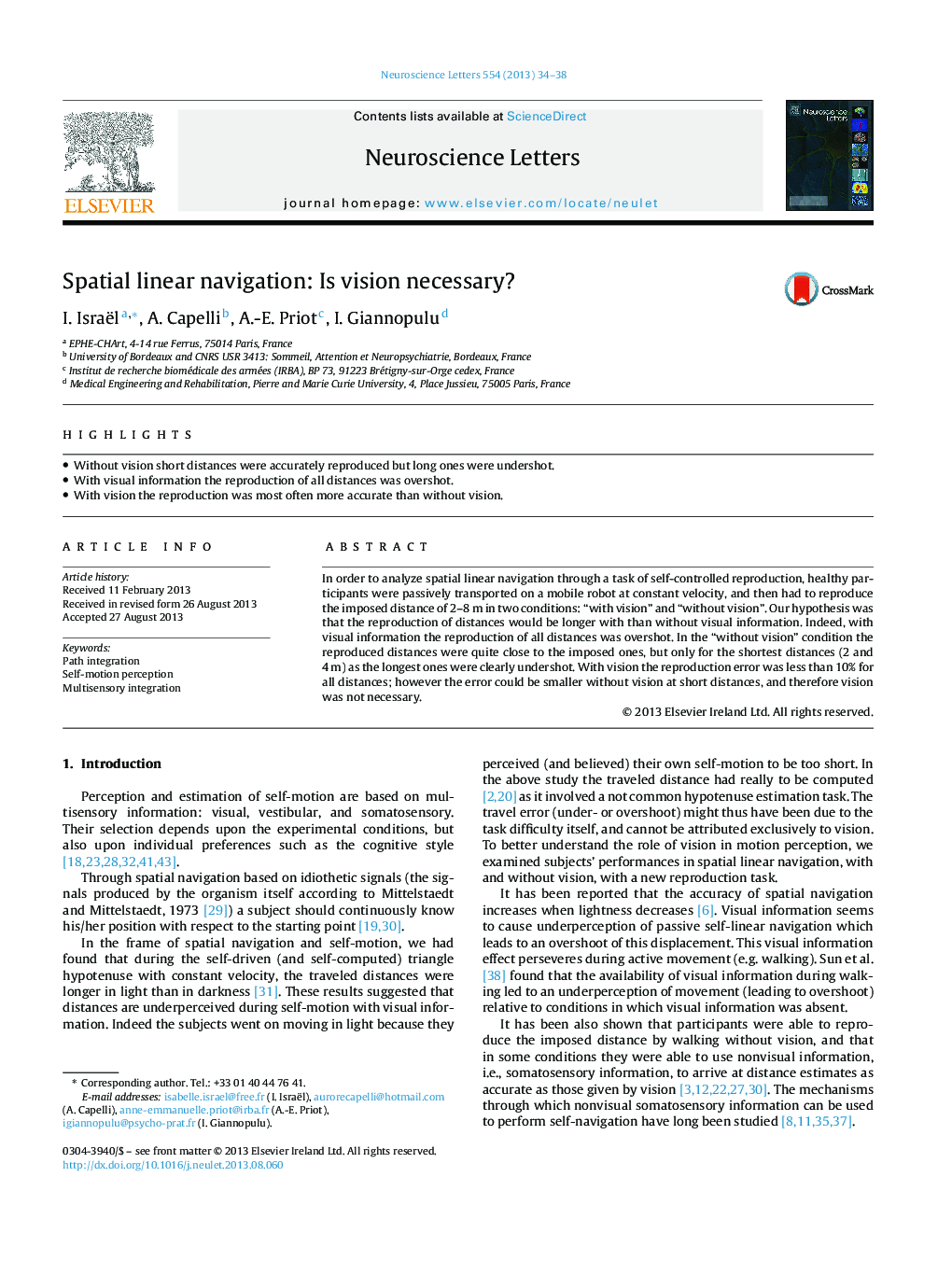| Article ID | Journal | Published Year | Pages | File Type |
|---|---|---|---|---|
| 4343951 | Neuroscience Letters | 2013 | 5 Pages |
•Without vision short distances were accurately reproduced but long ones were undershot.•With visual information the reproduction of all distances was overshot.•With vision the reproduction was most often more accurate than without vision.
In order to analyze spatial linear navigation through a task of self-controlled reproduction, healthy participants were passively transported on a mobile robot at constant velocity, and then had to reproduce the imposed distance of 2–8 m in two conditions: “with vision” and “without vision”. Our hypothesis was that the reproduction of distances would be longer with than without visual information. Indeed, with visual information the reproduction of all distances was overshot. In the “without vision” condition the reproduced distances were quite close to the imposed ones, but only for the shortest distances (2 and 4 m) as the longest ones were clearly undershot. With vision the reproduction error was less than 10% for all distances; however the error could be smaller without vision at short distances, and therefore vision was not necessary.
